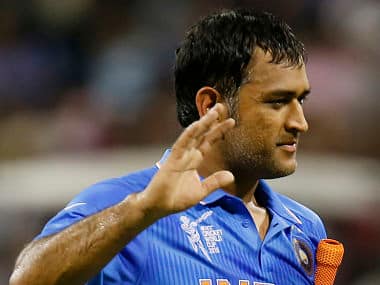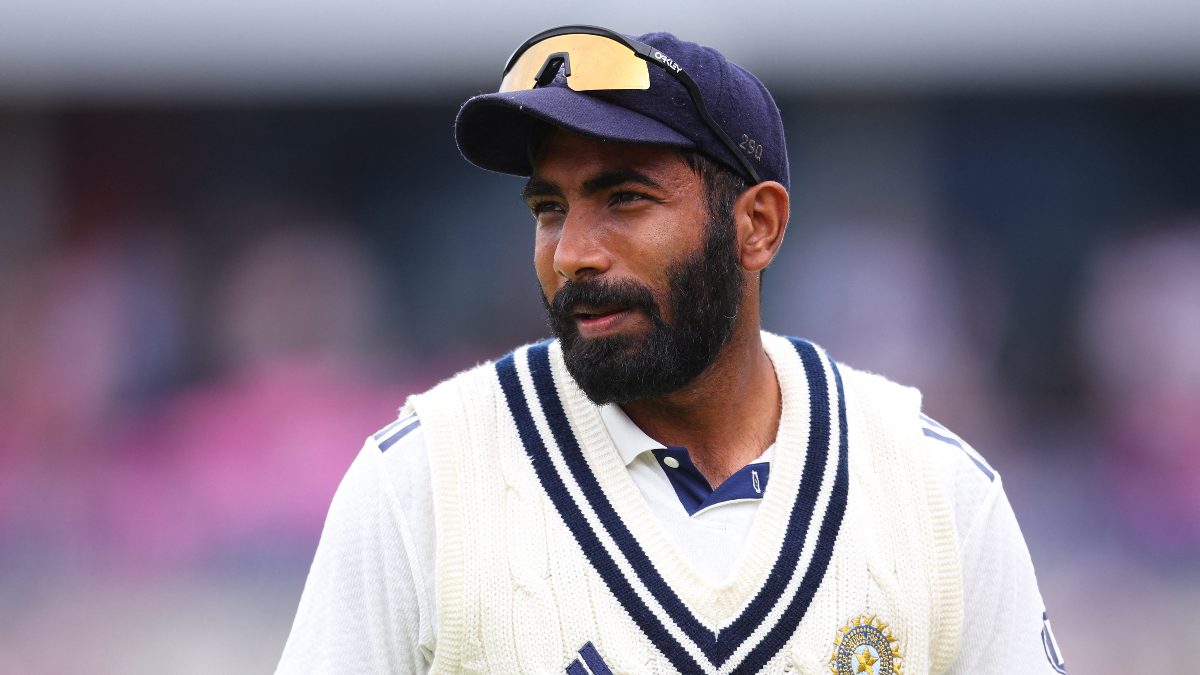In the grand narrative of Dhoni’s career, his unbeaten 45 against West Indies is unlikely to warrant a starring role. But in the mini-narrative of India’s World Cup defence, it played a particularly vital role in keeping his team’s nose in front in Group B. Facing an underwhelming target, but on a pitch that gave batsmen little respite, India’s young gunslingers were perhaps a touch to eager to complete the job. The graying old sheriff took the opportunity to remind everyone that though his powers may be on the wane, he still has the coolest head in a crisis (even if this time he did not take the match into the last over). Dhoni came in to bat in the 19th over, with India 78 for 4 and the match teetering. Shikhar Dhawan and Rohit Sharma had both received excellent deliveries from Jerome Taylor but Virat Kohli and Ajinkya Rahane did not need to play the expansive shots that cost their wickets. Dhoni hasn’t been in the best of form over the last 12 or 13 months either – just one half-century in 10 innings since last February. His average over that stretch was 28. Some of that was down to circumstances – coming to bat late in an innings – but there other occasions when Dhoni was very un-Dhoni like. He made a scratchy 8 from 21 balls against the West Indies in Kochi. He limped to 34 from 61 balls against England in Brisbane. [caption id=“attachment_2140791” align=“alignleft” width=“380”]  Dhoni is still the master of the chase. AP[/caption] Against the West Indies, Dhoni took his time to get going, knowing he could afford to - India were not up against the clock. Just three runs came from his first 10 balls. From his first 34 balls, he struck a seemingly meager single four. Of the other India batsmen, only Suresh Raina scored a small percentage of his runs in boundaries. Raina did so while waging his own personal battle against the short ball. The West Indies bowlers peppered him with short stuff and Raina attempted to pull, hook and cut as if leaving a delivery was a threat to his honour. He, too, would perish trying to attack. Ravindra Jadeja came, struggled and went. He attacked with little purpose and eventually fell to the hook shot. Meanwhile Dhoni continued to do what he was doing. He walked across his stumps and worked the ball into vacant areas on the legside. He nudged balls to third man. He ran quick singles. He rarely played a truly attacking stroke. When he did, he made sure the odds were on his side. He slashed hard at a short ball outside off from Andre Russell, when there was no deep third man fielder. It is likely he assumed a thick edge could clear the boundary, which it did. When Jadeja got out, India still needed 49 runs but there was the palpable sense that as long as Dhoni struck around, India would be fine. R Ashwin finally proved a willing ally and adopted his captain’s approach. Even when Jason Holder brought on Marlon Samuels, Ashwin would not be tempted into playing the big shot. His partnership with Dhoni – worth 51 – ended up being the highest of the innings. A bigger target would undoubtedly have challenged Dhoni more. A more experienced captain than Jason Holder may not have resorted to bowling Dwayne Smith or Marlon Samuels. But this does not discredit Dhoni. He did what needed to be done, as he so often has before. Dhoni’s knock also highlighted the fragility of India’s lower-middle order, which was tested for the first time in the tournament. South Africa have David Miller, JP Duminy and Rilee Rossouw lurking down the order; Australia have Glenn Maxwell, James Faulkner and Brad Haddin. Even West Indies have Lendl Simmons, Darren Sammy and Andre Russell. India’s batting looks thin in comparison once you get to Raina at No. 5. On bouncy pitches, Raina will struggle, as he showed against the West Indies. He averages just 25.92 in Australia from 14 innings. Dhoni alone cannot hold the fort. India need Jadeja to make runs. “I think he [Jadeja] needs to improve,” Dhoni said at the post-match press conference. “He needs to step up really because we have a lot of faith in him, but at the end of the day you can’t really play with hope. What you want is actually performance on the field. “He has that capability. You don’t get three triple hundreds in India just because you know how to bat. He’s definitely talented, but he needs to keep believing in himself. Every batsman, he is tested in a few areas. They will bowl short paced deliveries to him. He will have to find a way in which he can tackle it because every batsman tackles it in a different way, so he’ll have to find a way, what he can really do.” Had India lost to the West Indies, they risked conceding the top spot in Group B to South Africa, and opening up the possibility of facing Sri Lanka or Australia in the quarter-finals. A win keeps them in pole position and sets up a potential quarter-final against England or Bangladesh. England may have beaten India twice in the Tri-series but this is not that India team. Nor is it that England team. There was another little bonus for Dhoni. He is now India’s most successful ODI captain in terms of wins away from home, breaking a tie with Sourav Ganguly. Expect him to add a few more wins to that total before this World Cup is over.
Against the West Indies, Dhoni took his time to get going, knowing he could afford to - India were not up against the clock.
Advertisement
End of Article
Written by Tariq Engineer
Tariq Engineer is a sports tragic who willingly forgoes sleep for the pleasure of watching live events around the globe on television. His dream is to attend all four tennis Grand Slams and all four golf Grand Slams in the same year, though he is prepared to settle for Wimbledon and the Masters. see more


)

)
)
)
)
)
)
)
)



